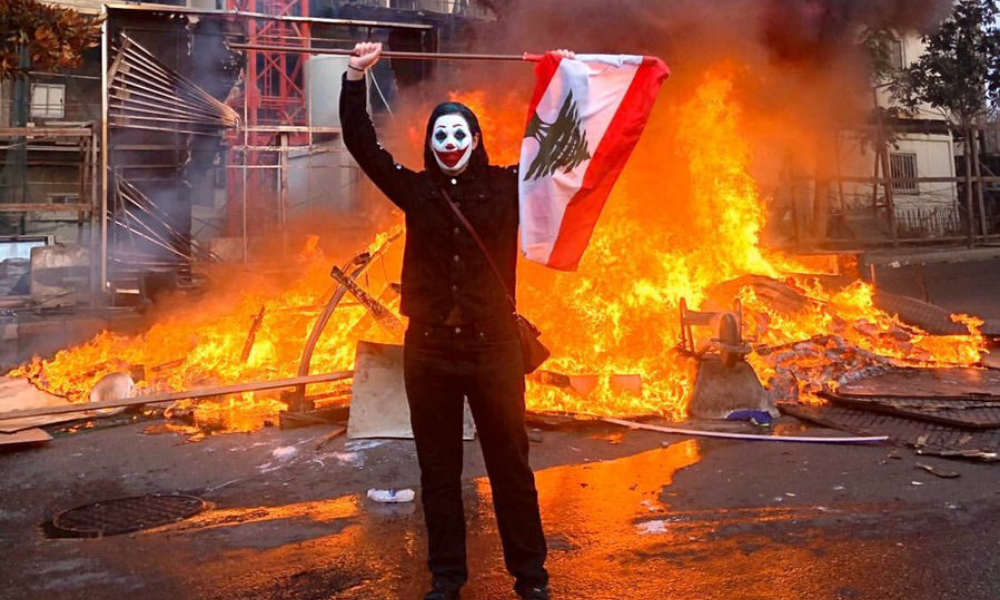Riots Are Not Just Mindless Violence

It seemingly can happen anywhere – and at any time. From London to Hong Kong, apparently peaceful cities can sometimes erupt suddenly into widespread, and often sustained, unrest. But what role does psychology play in this? And can it explain how, why and when crowds turn to violence?
The recent film Joker tells the bleak story of how a mentally ill loner, Arthur Fleck, becomes the infamous comic book villain – and inspires a riotous popular movement. In the film, the stage seems well set for a riot. Gotham City is depicted as “… a powder keg of lawlessness, inequality, corruption, cuts and all-round despair.”
But is the crowd protesting this – or acting as a mindless mob? As commentator Aditya Vats has pointed out, the film appears to reflect the views of the 17th-century philosopher Thomas Hobbes, who argued that society has a drive towards chaos and destruction. In the film, Fleck is portrayed as the individual who unleashes these apparently innate tendencies when he brutally kills first three wealthy young bankers – and then a TV talk show host live on air. Subsequently, thousands of rioters in clown masks are shown rioting, looting and killing, seemingly inspired by his actions.
This is a simple, and popular, representation of real-world crowd violence. But does it accurately reflect the true psychology underpinning “riotous” behavior?
There are three “classical” theoretical explanations of the crowd that endure in the popular imagination. The first, “mad mob theory,” suggests that individuals lose their sense of self, reason and rationality in a crowd and so do things they otherwise might not as an individual.
The second is that collective violence is the product of a convergence of “bad” – or criminal – individuals enacting their violent personal predispositions together in the same space.
The third is a combination of the first two and is captured in the narrative of Joker: “The bad leading the mad.” To quote from a book on the 2011 English riots Mad Mobs and Englishmen: that “evil and unscrupulous people – often outsiders or enemies – take advantage of the gullibility of the crowd in order to use them as a tool for destruction.”

What really happens
While these explanations are often well rehearsed in the media, however, they do not account for what actually happens during a “riot.” This lack of explanatory power has meant that contemporary social psychology has long rejected these classical explanations as inadequate and even potentially dangerous – not least because they fail to take account of the factors that actually drive such confrontations. In fact, when people riot, their collective behavior is never mindless. It may often be criminal, but it is structured and coherent with meaning and conscious intent. To address the causes of such violence, we need to understand this.
Contrary to expectations, there are actually important boundaries and limits during riots relating to 1) what goes on (and what doesn’t) and 2) what (and who) becomes influential. Research and modern crowd theory suggest that these behavioral limits of crowd action relate in important ways to the limits of social identification.
Consider Steve Reicher’s analysis of the 1980 St Paul’s “riot” in Bristol, England. Reicher demonstrated that the crowd’s actions were governed by the individuals’ shared sense of social identity as members of the St Paul’s community. This identity was partly defined by a united opposition to police “aggressors” who symbolically were seen to be attacking the community by raiding the Black and White cafe, an important local hub.
Reicher also showed how this collective identity placed important constraints on what happened during the “riot” – and where. First, there were clear limits on who and what constituted a legitimate target, with only those viewed as being in opposition to the St Paul’s identity – largely, the police – being attacked. Second, there were defined geographical limits – the police were only attacked while they were within the boundaries of St Paul’s and were left alone once they had left.
Behavioral ‘contagion’
The St Paul’s study demonstrates that people in riots act according to their assumed social identities and do not behave mindlessly, as if subject to an irrational “group mind”. For example, crowd members described throwing stones at police officers as normative and widespread – “a few bricks went in and then people closed the road and everybody started doing it”. Attacks against other targets, however, were isolated and widely denounced – “a bus … got one window smashed … Everyone went ‘Ugh’, ‘idiots’.”
But why do individual acts of violence spread and “infect” others, inciting them also to riot?
Classical crowd theories, like the narrative of the Joker, suggest that mere exposure to the behavior of others leads observers to act in the same way. According to this line of thinking, behavior is spread via a process of “contagion”, transmitted automatically from one person to another. This would mean the mere act of watching the Joker kill live on TV could explain why others turned to violence on the streets of Gotham.
But this notion of behavioral contagion cannot explain the clear patterns and boundaries of precisely what behavior “spreads” and what doesn’t. Why, for example, did the riots that swept England in August 2011 – and which followed the shooting by police of Mark Duggan – spread from London to some cities, but not others?
The answer to this is related to how people construct group boundaries (we are more influenced by fellow in-group members than out-group members) and the extent to which actions are in line with prevailing group norms. As rioting swept across England in August 2011, research suggests that it was those who identified as anti-police that mobilised onto the streets and were subsequently empowered through their localised interactions with the authorities and each other. The targets of their subsequent collective rioting were not random, but focused predominately on the police, symbols of wealth and large retail outlets owned by big corporations.
Seen in this light, the Joker’s actions didn’t merely invoke a Hobbesian dystopia but instead are better understood as unwittingly galvanizing a simmering anti-wealth movement brought about by structural inequality and injustice. And based on research on riots in multiple disciplines such as social psychology, history and criminology, the spread of the subsequent unrest would have been far from random.
In a real world Gotham, only those who identified as “anti-wealth” would have been subject to the crowd’s influence during the riots, and only those actions consonant with this identity (for example, attacking and looting symbols of wealth) would have been “acceptable” to the Joker’s foot soldiers. As the riots developed, the apparent disempowerment of the authorities in one location, would have led those who identified as “anti-wealth” in other parts of the city to mobilise onto the streets and take on their erstwhile “common enemy”.
Of course, Joker isn’t real life but its narrative of contagion and random violence is common as an “explanation” of real life. But behind the scenes, with closer rereading of riots, social psychology can help bust the myth of the irrational mob and begin to explain how the fictional city – as well as countless real ones – can and do transform from tranquility into widespread and enduring crowd violence.




























































































>>but its narrative of contagion and random violence is common as an “explanation” of real life.<<
It’s neither common nor an explanation.